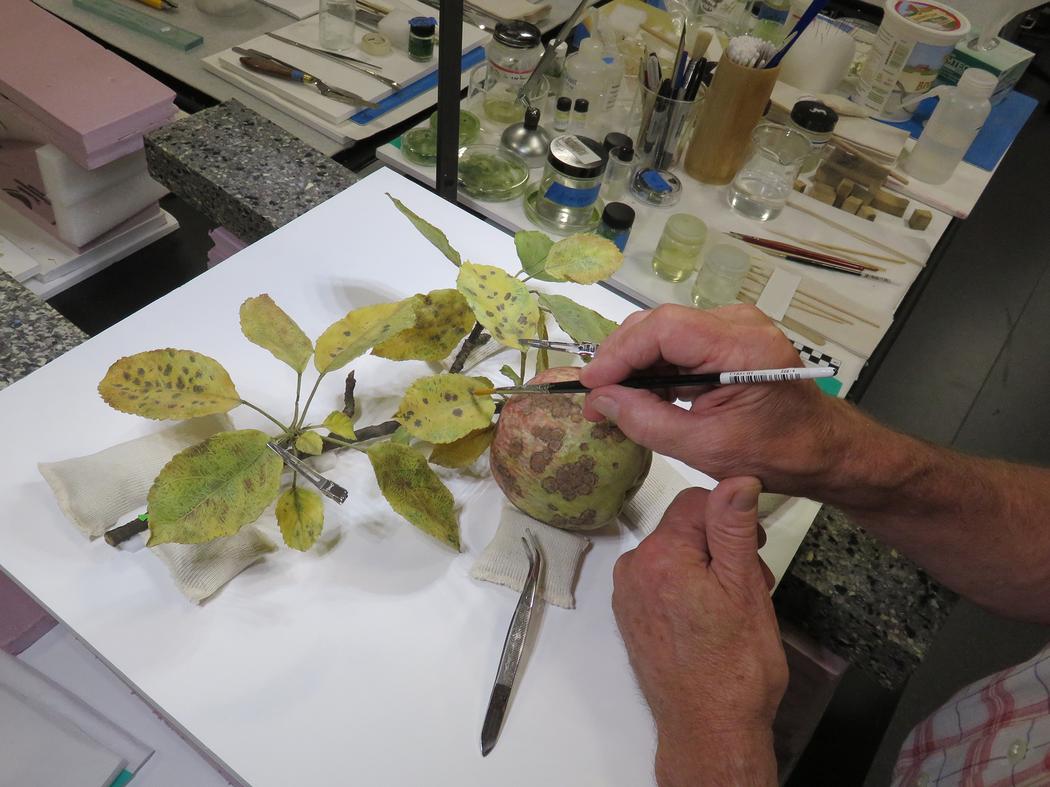
“L’an 2000” (“The year 2000,” 1901), print on cardboard; a collection of uncut sheets for confectionery cards showing life imagined in the future (photo by the author for Hyperallergic). Click for full size.
LONDON — The 1982 film Blade Runner imagined 2019 Los Angeles as a dystopia of noirish neon and replicants, robots sent to do hard labor on off-world colonies. It’s a future in which engineered beings are so close to humans as to make the characters question the very nature of life. We’re now just a couple of years from this movie’s timeline, and although our robots are still far from mirroring humanity, our science fiction continues to envision giant leaps in technology that are often rooted in contemporary concerns of where our innovations are taking us.
Patrick Gyger, curator of Into the Unknown: A Journey through Science Fiction at the Barbican Centre, told Hyperallergic that, for him, science fiction “allows creators to look beyond the horizon of knowledge and play with concepts and situations.” The exhibition is a sprawling examination of the genre of science fiction going back to the 19th century, with over 800 works. These include film memorabilia, vintage books, original art, and even a kinetic sculpture in a lower-level space by Conrad Shawcross. “In Light of The Machine” has a huge, robotic arm twisting within a henge-like circle of perforated walls, so visitors can only glimpse its strange dance at first, before moving to the center and seeing that it holds one bright light at the end of its body.
[…]
The exhibition shows, but does not dwell on, who has been left out of a history mostly shaped by white men (there are rare exceptions on view, like the “Astro Black” video installation by Soda_Jerk that muses on Sun Ra’s theories of Afrofuturism). It would be worthwhile to spend more time on figures who broke through these barriers, such as author Octavia Butler. As discussed on a recent podcast from Imaginary Worlds, her black characters were sometimes portrayed as white on her book covers to make them more appealing to science fiction readers. The exhibition could also have a deeper context for why certain veins of science fiction are prominent in particular eras, and perhaps question why we don’t have a lot of science fiction narratives on current crises like climate change. For instance, the much smaller 2016 exhibition Fantastic Worlds: Science and Fiction 1780–1910 from the Smithsonian Libraries compared milestones like Mary Shelley’s 1818 Frankenstein; or, The Modern Prometheus with physician Luigi Galvani’s “animal electricity” experiments on animating dead frog legs, and highlighted how Jules Verne channeled the doomed Franklin expedition in his 1864 book The Adventures of Captain Hatteras.
Nevertheless, having an exhibition like Into the Unknown at a mainstream space like the Barbican is significant, showing the art world appreciates science fiction beyond kitsch. And science fiction continues to be one of our important portals for thinking about the ramifications of our technological choices, and where they might take us.
You can read and see much, much more at Hyperallergic. Fascinating!

















